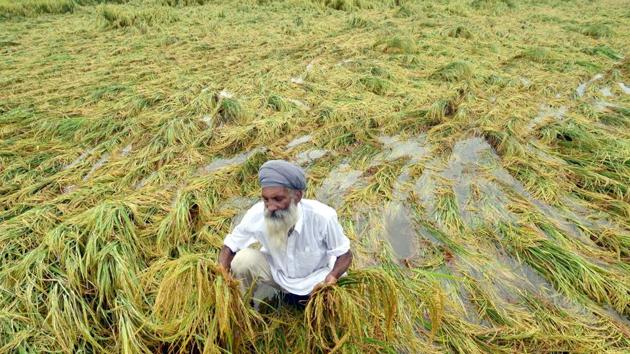Why real income isn’t farmers’ main concern
The bulk of India’s economic output is generated and owned by the non-farmers. This explains why inflation-targeting is one of the guiding principles of our economic policy now.
Economists normally look at growth in real incomes to measure change in well-being levels in an economy. This makes sense because this method filters out the effect of inflation. This, however, does not reduce the importance of nominal incomes. The example of Indian farmers is a case in point.

The broadly accepted political economy narrative in India can be described as follows: The NDA-I lost the elections due to a rural backlash against the India Shining campaign. The United Progressive Alliance (UPA) is believed to have recaptured power in 2009 on the back of its favourable rural outlook such as a rural jobs scheme, higher Minimum Support Prices (MSP) and a farm loan waiver which was announced just before the elections. However, the honeymoon did not last and a mix of corruption and inflation led to a big defeat for the UPA-II in 2014. The rural distress narrative has been regaining momentum under the present government.
Chart 1 shows annual growth in Gross Domestic Product/Gross Value Added in agriculture at current and constant prices since the quarter ending December 1999. This broadly covers the period from the first National Democratic Alliance (NDA) government. We use the 2004-05 GDP series figures till March 2012. 2011-12 GDP series figures have been used for the subsequent period.

Nominal and real agricultural growth was almost the same during the NDA-I period. This changed after the UPA-I assumed power, with nominal growth exceeding real growth most of the times. But the trend started reversing itself under the UPA-II. In fact, the difference between nominal and real growth in agriculture under the UPA-II was the lowest in the quarter ending March 2014, just before the parliamentary elections. The Congress suffered its biggest defeat in the 2014 elections. However, the trend did not reverse itself after Narendra Modi led NDA-II assumed office. The rural distress narrative revived quickly under the new government. It is worth underlining that UPA’s agricultural performance looks more sober in terms of real growth.
Is this a case of Indian farmers suffering from money illusion, which is about not being able to differentiate between real and nominal incomes? Another set of statistics can throw some light on this question. The rural-urban dualism in the Indian economy also captures the entrenched economic asymmetry. Non-farm incomes have been growing at a much faster pace than in agriculture, but non-farm sectors cannot absorb the entire surplus workforce in the farm sector. Rural-urban tensions will increase if the gap between farm and non-farm incomes widens at a faster pace. One way to capture this is to compare difference in growth rate of agriculture and the rest of the economy.

Chart 2 here shows the difference between agricultural and non-agricultural growth at current and constant prices, using both the 2004-05 and 2011-12 GDP series.
The trend is not very different from what can be seen in Chart 1. Agriculture’s growth deficit vis-à-vis the non-farm economy was muted during the UPA-I in nominal terms, even though this was not the case in real terms.
The trend reversed during the first half of the UPA-II. While there was a brief recovery in the latter half and it continued in the first half of the NDA-II, the nominal deficit of agricultural growth vis-à-vis non-agricultural growth has been continuously higher than the real deficit since June 2017.
This has important implications. Nominal incomes matter while making day-to-day spending decisions. This is especially the case for people who have smaller incomes, and are more concerned about consumption rather than investment. An overwhelming majority of India’s farmers belong to this category. The relatively well-off sections that can afford to set aside greater share of their incomes for investment would be more concerned about inflation as it is an important determinant of real interest rates.
The bulk of India’s economic output is generated and owned by the non-farmers. This explains why inflation-targeting is one of the guiding principles of our economic policy now.
Investment, after all is crucial for long-term growth. Higher inflation lowers real interest rates, which can reduce the incentive to invest. This larger goal need not be in interest of the farmers though, who are more bothered about crop prices than inflation numbers.






